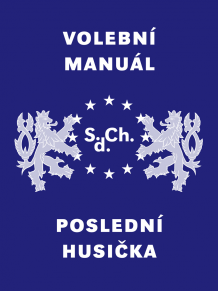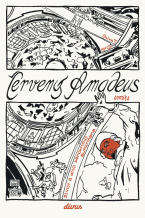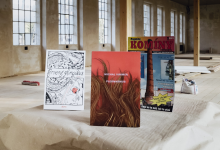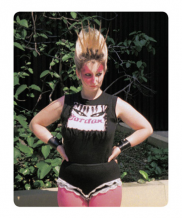|
People ask me all the time: Is La Pocha Nostra (my performance troupe) being censored in the USA? Tired of silence and diplomacy, with my heart aching and my political consciousness swelling, I now choose to speak. As a child in Mexico, I heard adults whispering about blacklists, and those who named names. My older brother, Carlos, was involved in the 1968 movimiento estudiantil, and several of his friends disappeared for good. During my formative years in Latin America, censorship was indistinguishable from political repression, and often resulted in the imprisonment, displacement, exile or death of “dissident” intellectuals and artists. In the ’70s, many Latin American artists ended up migrating to the United States and Europe, in search of the freedom we couldn’t find in our homelands. When I moved to California in 1978, I found a very different situation. Artists and intellectuals simply didn’t matter. The media treated our art as either an exotic new trend or a human-interest story, and the political class didn’t pay attention to us, which gave us the illusion of freedom. As artists, we rejoiced in our mythical condition of liberty, our celebrated “American freedom.” I developed a reputation as an iconoclast by engaging in symbolic acts of transgression that explored and exposed sources of racism and nationalism. Coco Fusco and I exhibited ourselves inside a gilded cage, dressed as fictitious “Indians,” to protest the quincentennial celebrations of Columbus’ arrival in the Western hemisphere (Two Undiscovered Amerindians Visit …, 1992–93). Roberto Sifuentes and I crucified ourselves in full mariachi regalia to protest immigration policy (The Cruci-fiction Project, 1994). I became good at organizing ephemeral communities of like-minded rebel artists. I advised activists on how to use performance art strategies to enhance their political actions. I used the art world as a base of operations. In 20 years of touring the United States as a “radical” performance artist, I have come across innumerable situations in which the content of my “politically direct,” “racially sensitive” and “sexually explicit” material had to be “adapted” and “translated” to the site. Because of this, according to a curator friend of mine, I am “no virgin in the house of censorship.” Since 9/11, however, my collaborators and I are facing an entirely new dilemma: prohibition—both overtly imposed and internalized. My agent, Nola Mariano, recently told me in a letter: Besides the ideological censorship exercised by the Bush administration, I believe that we have entered a new era of psychological censorship, one that is sustainable as we, our collaborators, and allies find ourselves second-guessing our audience responses, fearing for our jobs, and unsure of our boards’ support. Unable to quickly identify the opposition, we find ourselves shadowboxing with our conscience and censoring ourselves. This is a victory for a repressive political administration. One not won but, rather, handed to them. This imposed culture of panic, prohibition and high security permeating every corner of society—including our arts organizations—has created an incendiary environment for the production of critical culture. We are being offered budgets that are half what we used to work with in the pre-Bush era. As a result, we can only present small-scale projects in the United States, and under technically primitive conditions. These new conditions are similar to those we face in Latin America, but without the community spirit and the humane environment we find there—without people’s willingness to be always present and donate their time and skills. So far, what has saved La Pocha Nostra from closing our doors is international touring. Sixty percent of our budget now comes from other countries. As if this weren’t enough, due to “security restrictions,” our props, costumes and art materials are carefully scrutinized at every airport we enter. Homeland Security officers are now even checking the titles of our books and opening our notebooks and phone agendas, both when we leave and when we return to the United States. Frequently, our materials are confiscated. Once, our trunk of props was confiscated by security at Boston’s Logan Airport, held for two days, and then delivered to us a half-hour before opening night—with no explanation. Not surprisingly, all the “weird”-looking props were missing, courtesy of Homeland Security. Should we change the nature of our props and art materials, and the way we dress? My colleagues and I are already doing this. Isn’t this a form of censorship? In this rarefied atmosphere of paranoia, distrust and scrutiny, performance artists have come to signify “potential trouble” for U.S. art institutions. We are invited with provisos, interrogated in advance by curators. It’s a new American art rite. The cultural institution decides to go ahead with the project, but still has apprehensions. We are taken to a nice art bar and, after a few drinks—bless his/her heart—the curator or presenter takes a deep breath and starts the euphemistic interrogation: Is this performance “audience-friendly”? (A euphemism for art without venom or sharp edges) Anything we should be worried about? Frontal nudity? Violence and sex? (The Deadly Combo) Bloodletting? Exposure to bodily fluids? Will your performers touch any audience member inappropriately? Will you force any audience member to do anything that might be considered humiliating or offensive? Any profanity? Any disrespect for religious imagery? Will there be flag desecration? Will you be making fun of the Troops? We try to be as specific as we can in terms of describing the images and performance rituals in our piece. We then try to negotiate, case by case, image by image, the inclusion/exclusion of the most sensitive material. It’s tough: if we give in too much, then the project becomes defanged, decaffeinated. But if we don’t pay attention to their fears and just go ahead and do whatever we want, we will immediately be blacklisted in their circuit. It’s like performing in ’70s provincial Mexico. The problem is that the fears of the presenters are well-founded; their moral dilemmas are real. Their institutions, whether mainstream or “alternative” (does anyone know what “alternative” even means nowadays?), are rapidly losing their funding. The media is not as willing to defend art as it used to be, and the newly empowered “faith-based organizations” are looking for blood: an art scandal calls down the wrath of God. Then, both the institution and the artists are attacked with hate mail and picketed by zombies. We might even be added to one of the many lists of “cultural traitors” featured on sites such as www.probush.com/traitor or www.americantraitor.us. And we might be vetted by groups like the New York Regional Association of Grantmakers, which warns on its Web site: In accordance with Executive Order 13224, the USA Patriot Act and other related laws, including voluntary guidelines issued by the Treasury Department, grantmakers regularly check the names of their prospective grantees against various watch lists produced by the government, and document their compliance to protect themselves from possible criminal and civil prosecution. Let’s face it, overt censorship is happening throughout the United States, and not just in “Red America.” My performance art colleagues and fellow spoken-word poets are being monitored, interrogated, de-funded, watered down, ignored, and un/dis-invited by our cultural institutions, many of which perceive themselves as “liberal.” It’s a major dilemma for critical culture in the United States, and at the same time it’s an international embarrassment. The whole world knows about it because it’s not happening anywhere else, not even in Catholic Latin America. The United States is no longer “the land of opportunity” it once was, or the “most advanced democracy” it claims to be. It is now the land of censorship, isolationism, xenophobia and Puritanism; one of the most parochial places on earth, and the only Christian democracy left in the continuously shrinking “free world” it claims to lead. Our political class is obsessed with closing our borders and keeping outsiders from entering. Since 9/11, the INS has denied La Pocha Nostra five visas to bring Mexican, Cuban and Colombian artists to the United States to work with us. In this sense, the border has become another form of censorship, and cultural exchange is now a nostalgic project of the late 20th century. One of the chilling by-products of censorship is that eventually artists begin to accept it as inevitable—normal, even. One of our performance projects, Mapa Corpo (2004), was rejected by a dozen U.S. museums and universities when they learned the nature of the central image: a nude body covered with 40 acupuncture needles, each bearing a small flag of one of the “coalition forces.” Audience members were invited to “decolonize the body/map of the performer” by extracting a needle/flag. After so many rejections (some explicit, others euphemistic, such as those citing “health concerns”) we decided to just perform the piece in other countries, such as the United Kingdom, Canada, Mexico and Brazil. The question for us performance artists is: How much are we willing to accept? We can delete certain texts, erase entire scenes, tone down our “outrageous behavior,” and eventually, when we least expect it, we will have lost our voices and our souls. If we choose to comply over and over again, eventually a tiny crystal (our dignity?) will shatter inside our chests. We will carry the pain silently wherever we go, and it will worsen each time we face yet another warning or humiliating interrogation. One day we will wake to find we have become broken humans, without even realizing it. An expanded version of “Disclaimer” appeared in the March 2006 issue of The Drama Review.
Recommended articles

|
|
The editors of Umělec have decided to come up with a list of ten artists who, in our opinion, were of crucial importance for the Czech art scene in the 1990s. After long debate and the setting of criteria, we arrived at a list of names we consider significant for the local context, for the presentation of Czech art outside the country and especially for the future of art. Our criteria did not…
|

|
|
There is nothing that has not already been done in culture, squeezed or pulled inside out, blown to dust. Classical culture today is made by scum. Those working in the fine arts who make paintings are called artists. Otherwise in the backwaters and marshlands the rest of the artists are lost in search of new and ever surprising methods. They must be earthbound, casual, political, managerial,…
|

|
|
Why political intellectuals, do you incline towards the proletariat? In commiseration for what? I realize that a proletarian would hate you, you have no hatred because you are bourgeois, privileged, smooth-skinned types, but also because you dare not say that the only important thing there is to say, that one can enjoy swallowing the shit of capital, its materials, its metal bars, its polystyrene…
|
|




































 We Are Rising National Gallery For You! Go to Kyjov by Krásná Lípa no.37.
We Are Rising National Gallery For You! Go to Kyjov by Krásná Lípa no.37.
Comments
There are currently no comments.Add new comment